Squarp Instruments intros Hapax, a new standalone dual project multi-track sequencer that takes sequencing and MIDI manipulation to the MPE level.
The first of March is a wild day. There are a lot of new product announcements. You think it’s done for today, the next big release is around the corner. The french developers of Squarp Instruments, known for their inspiring Pyramid hardware sequencer, today introduced another sequencer. One that has even more power and features.
At first glance, it looks like every Circuit user’s dream has come true. But it is the Hapax, a new powerful standalone multi-track sequencer designed to be centrepiece of your setup or even your entire studios. Sorry for the pictures, there are currently no better and clearer ones.
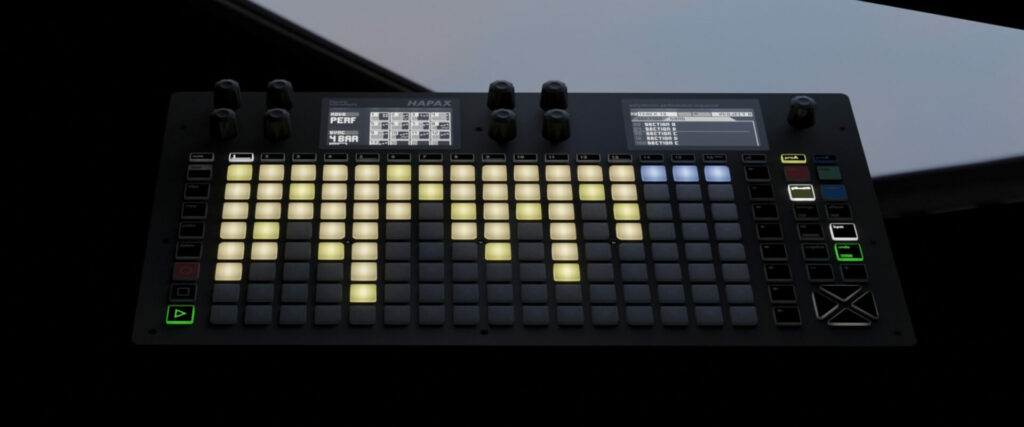
“Genuine centerpiece of a setup, Hapax offers every tool needed to compose songs in the studio and perform them on stage. From vintage to modern synths, from modular systems to your favorite DAW, Hapax can sequence and synchronize all your gear, while bringing you carefully crafted tools, designed for maximizing creativity.
Squarp Instruments Hapax
To the hard facts: The core of Hapax are two bright OLED display that gives you two projects, each with 16 tracks and 8 patterns per track. Yes. it can handle two separate and independent projects that can be played simultaneously. So you can compose fluently without spending long time re-organising your tracks.
Each pattern can be a note sequence with polyphony and MPE data or a beat with up to 8 different instruments within a single track. The possibility to record MPE in a hardware sequencer is novel. Squarp Instruments says it’s the first hardware sequencer that is capable to record the finest gestures, slides and articulations. That’s very exciting.
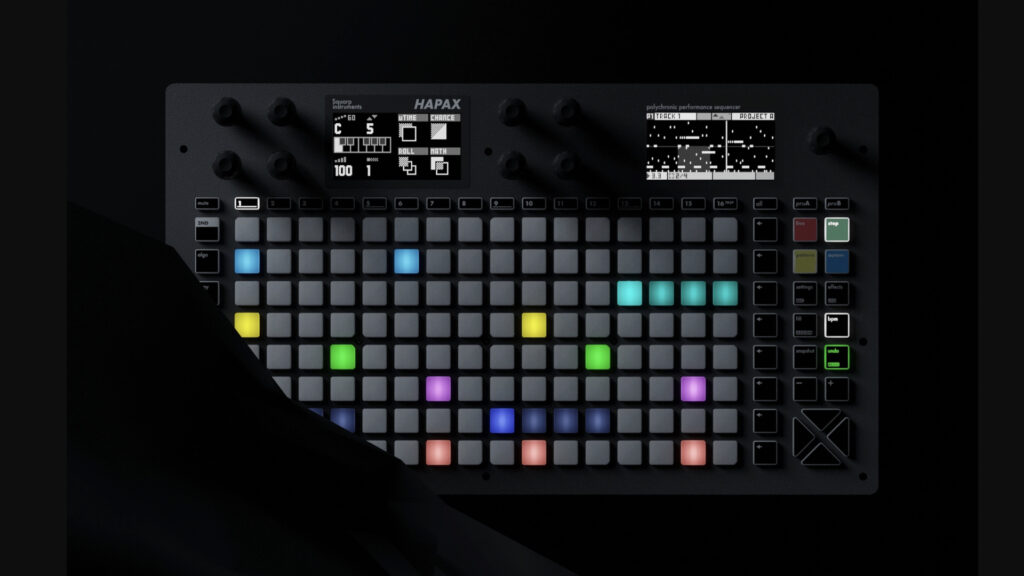
Pyramid was the first release of the Squarp developers. It is very popular because of its ingenious built-in MIDI modifiers. These are also included here giving you tons of composing flexibility. You can work with up to 8 real-time midi effects per track ranging from algorithmic tools that bring life to your composition, creative arpeggios, euclidean helpers, MIDI filter, to controlled random, there is a lot to explore. Plus, you can modulate these parameters of these with LFOs.
Hi-Res Creative Recording
Hapax is a high-resolution recorder that runs at 192 ppqn. It gives you different options to record your music. You can use the encoders and 128 pads to program your steps, work with external MIDI instruments incl. MPE controllers or with any incoming analog signal. From looper-style recording, count-down and metronome options, punch-in mode… there is certainly an option that fits to your workflow.
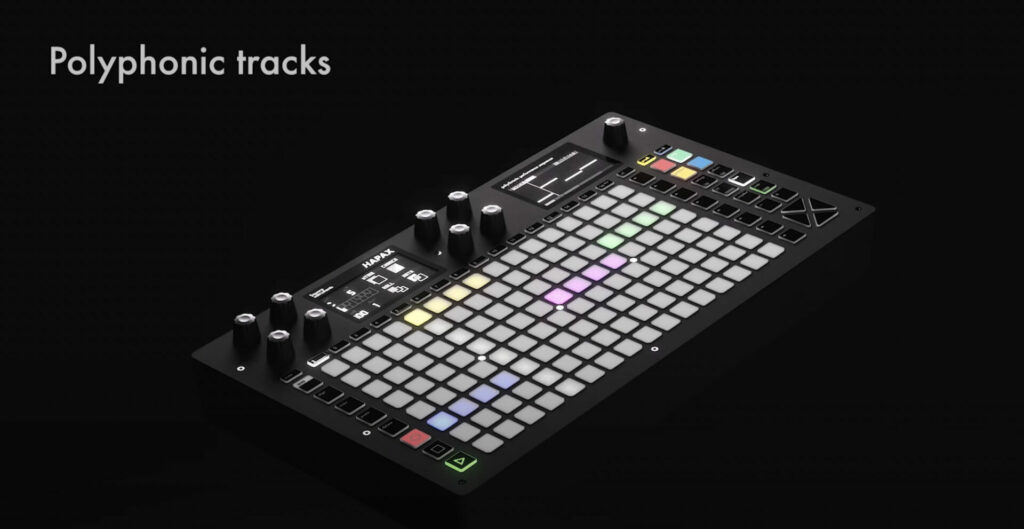
Then, for fast and intuitive chord building on the fly, it also hosts a an isomorphic keyboard and chord generator that brings harmonic capabilities to anyone. Further it has:
- independent BPM per track with a time elasticity algorithm
- undo/redo with history + snapshot
- dual-project transparent loading & playback for song mixing
Squarp Instruments promises that this is just the beginning and that new features & parameters will be added regularly.
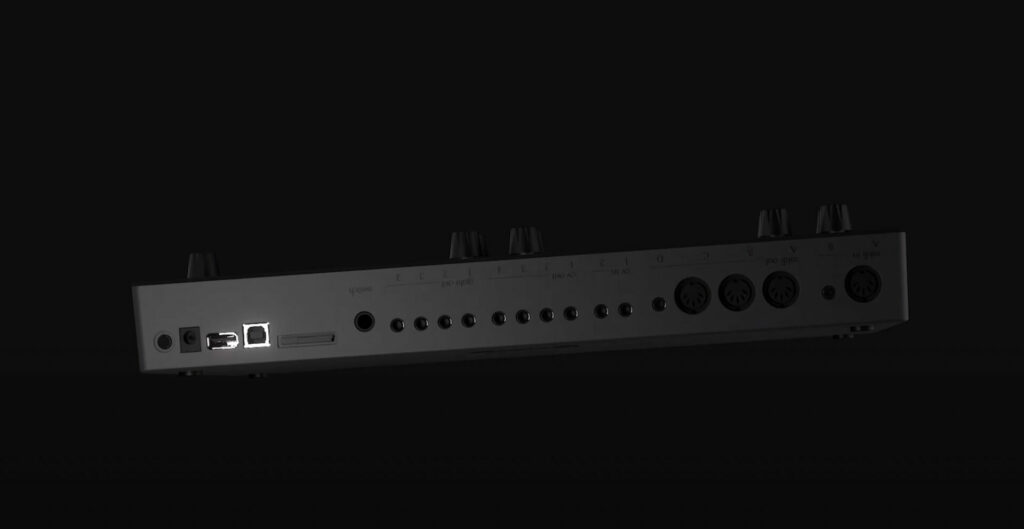
Connection
A good sequencer should not only have a good, stable firmware, but also sufficient connections. The Hapx has that in my opinion: on the input side you get
- 2x MIDI in (DIN + TRS), 2x CV in[-5V to +5V] (16bit) and a socket for a stereo pedal footswitch.
On the other side, you will find
- 4x MIDI out (3× DIN + TRS), 4× CV out [-5V to +5V] (16bit), 4× GATE out [+5V], bi-directional I/O, and USB host and device connection.
With the Pyramid, the French developers already have a powerful standalone sequencer in their portfolio. The Hapax is another few levels up. Above all, the MPE functionality makes it currently unique. It looks very tempting. Looking forward to the first user experiences.
Squarp Instruments Hapax is available now for 864€/$979 USD + VAT with free worldwide DHL express shipping.
More information here: Squarp Instruments

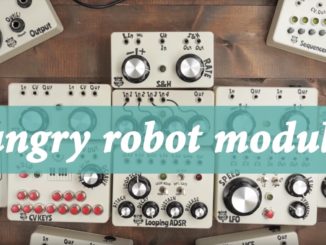
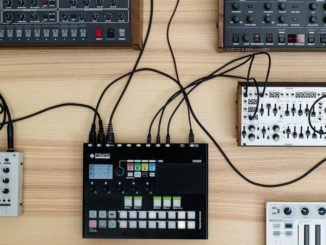
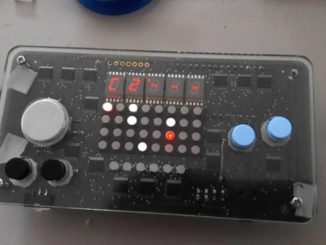
looks funky as hell but man, that price! the pyramid would be a much cheaper option and i think much less limited when it comes to patterns/notes and all that stuff. fak.
you have two Pyramids in the Hapax because you can run two project simultaneously side by side. Plus, the MPE data recording and editing function is a feature not available in any other hardware standalone sequencer.
from someone who can afford one or two pieces of gear a year [usually under $600usd] – those are the features i enver think about, i can see the pro’s or people that have the moneys be all up for it though, for sure. it still is funky as hell but i’d rather have more patterns/unlimited bars and such than say the usual 16 patterns. the nerdseq for example has tons of features but then the polyend tracker has more flexibility which then is limited compared to the dirtywave m8, which has 16 step patterns [but a more involved way to get around that with the tables thing]. dont have a negative view towards it, except for the price.
As a Pyramid owner I do not agree that it is two Pyramids. Hapax has 2 projects, each with 16 tracks containing 8 patterns each. A Pyramid has a single project with 64 tracks with up to 32 patterns each. Which device is better depends on your needs and workflow. The Pyramid is great. I suspect that the Hapax is as well.
I can imagine that the developers will add more tracks in the future. They also updated Pyramid from mk1 to mk3 massively via new firmwares 🙂
Yeah, I agree with this view. Pyramid is still a really great sequencer and Hapax doesn’t fully replace it depending on your needs. I agree with the other reply in that Squarp made some very good firmware updates throughout Pyramid’s lifetime, but I’d also never recommend buying a product based on future predictions if it doesn’t serve you with the features it already has.
I know for myself, I’ve listed my Pyramid as I think I’d be better served by the Hapax workflow even though it is bound to 16 tracks with 8 patterns each, but it is a compromise I’m fully aware of!
Looks very cool, and of course a bit Deluge inspired.
I like the idea that this machine can load two project simultaneously, but I can’t seem to find the information for how many projects you can save within the machine?
you can save them on a SD card so enough projects 🙂
Hmm, why not $2300 ?
Okay but… why would I want to run two projects at the same time? I don’t understand the appeal. I’ve never had the desire to have two instances of Ableton open at once or anything like that.
It’s mainly a feature for live where it makes senses.So you can prepare two complete sets and crossfade from one to another without interruption. There are a lot of musicians who don’t use Ableton Live on stage and so these could be a DAWless solution.
Looks like a synthstrom deluge…..
Mpe support coming soon.
Looks cool but I think I’m covered on most of these features.
Does not load midi files?
Shame
If they add load midi files…
I will buy It right now
Linnstrument can do it.